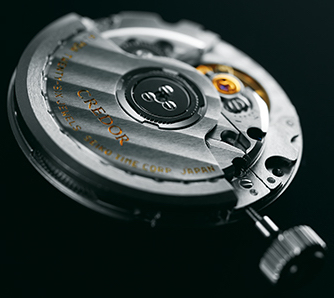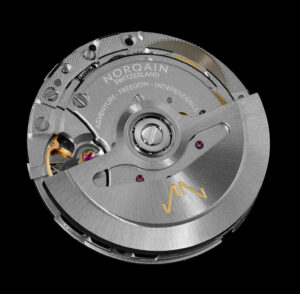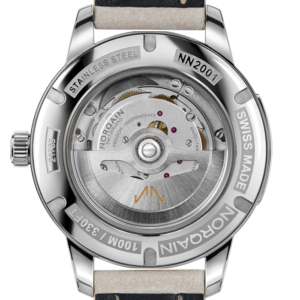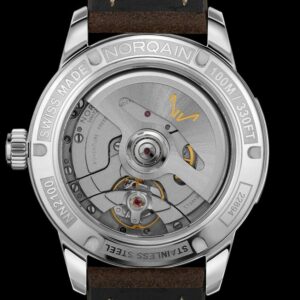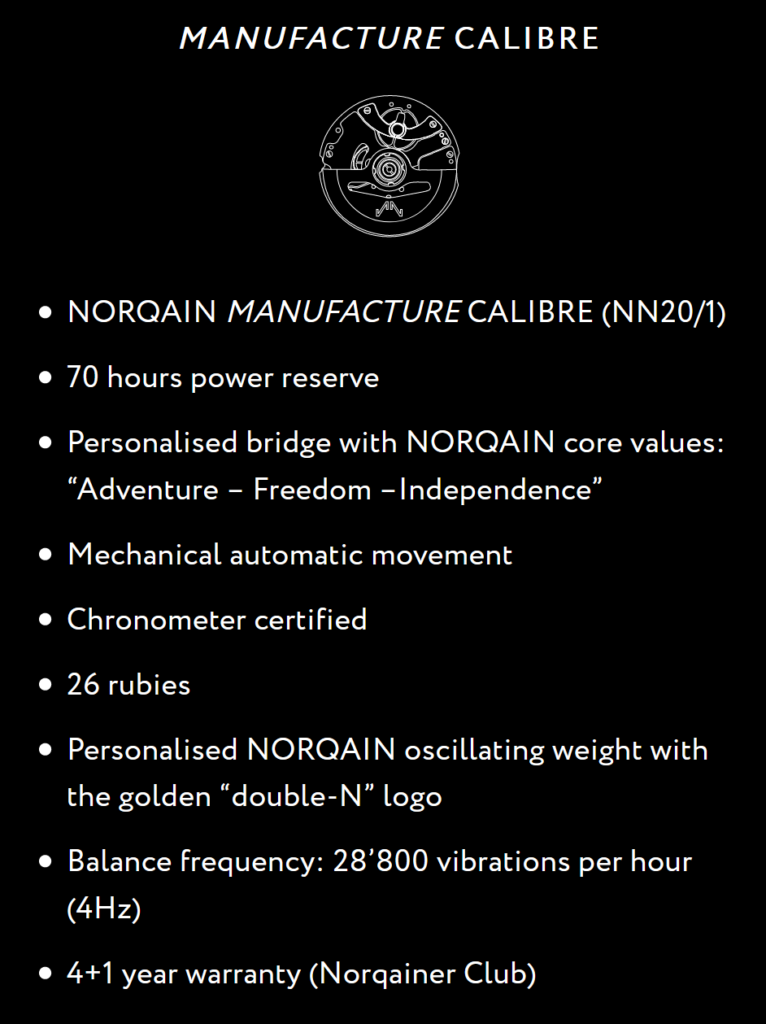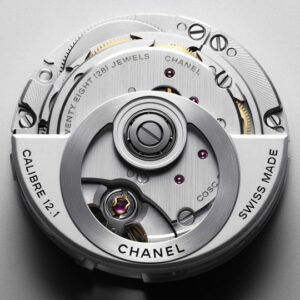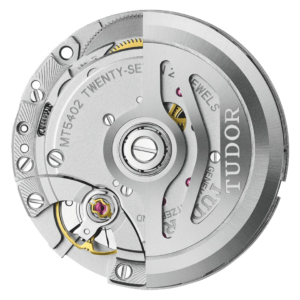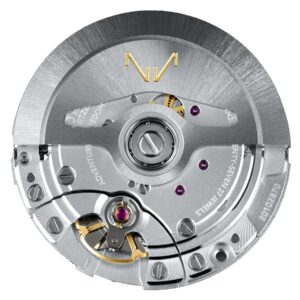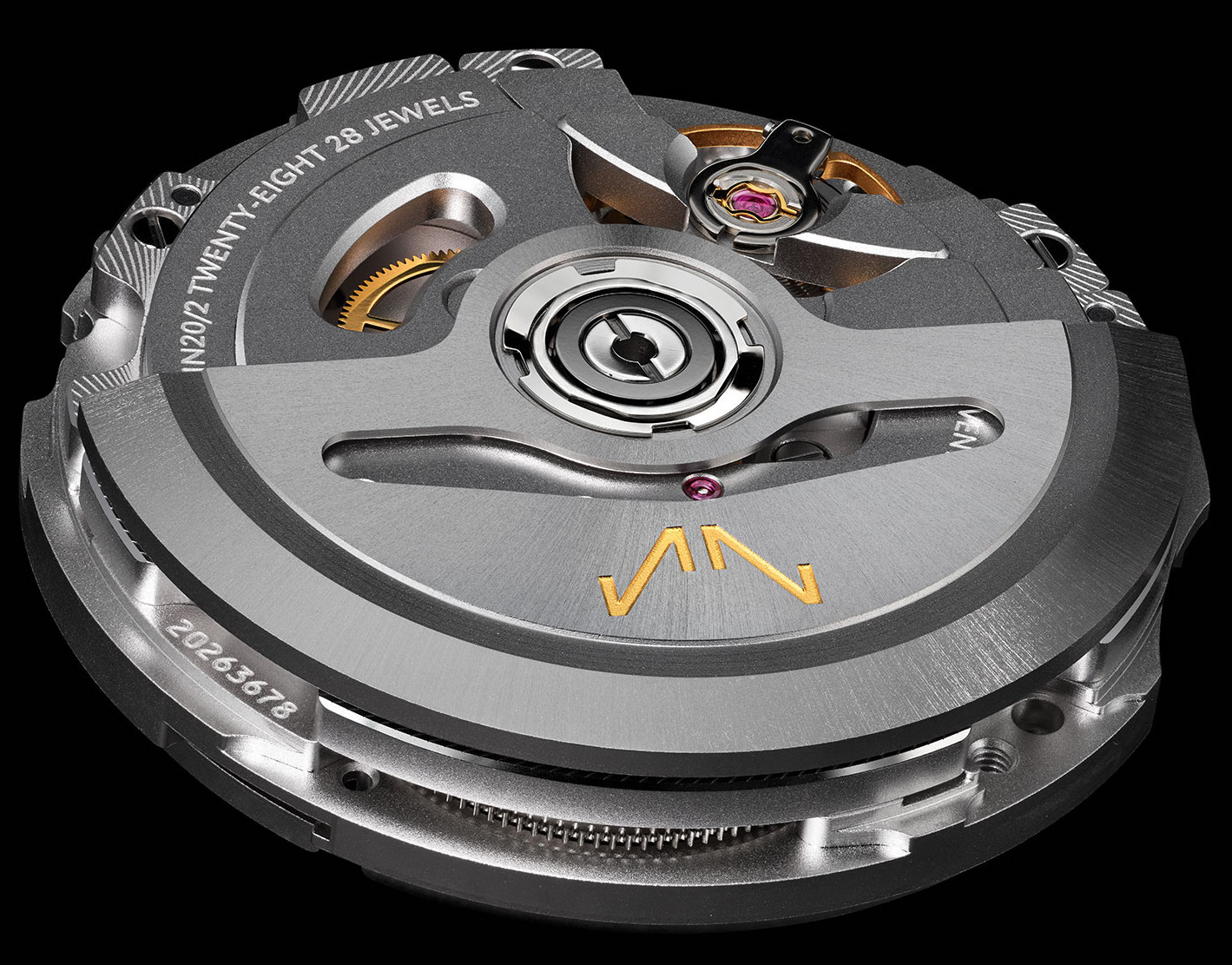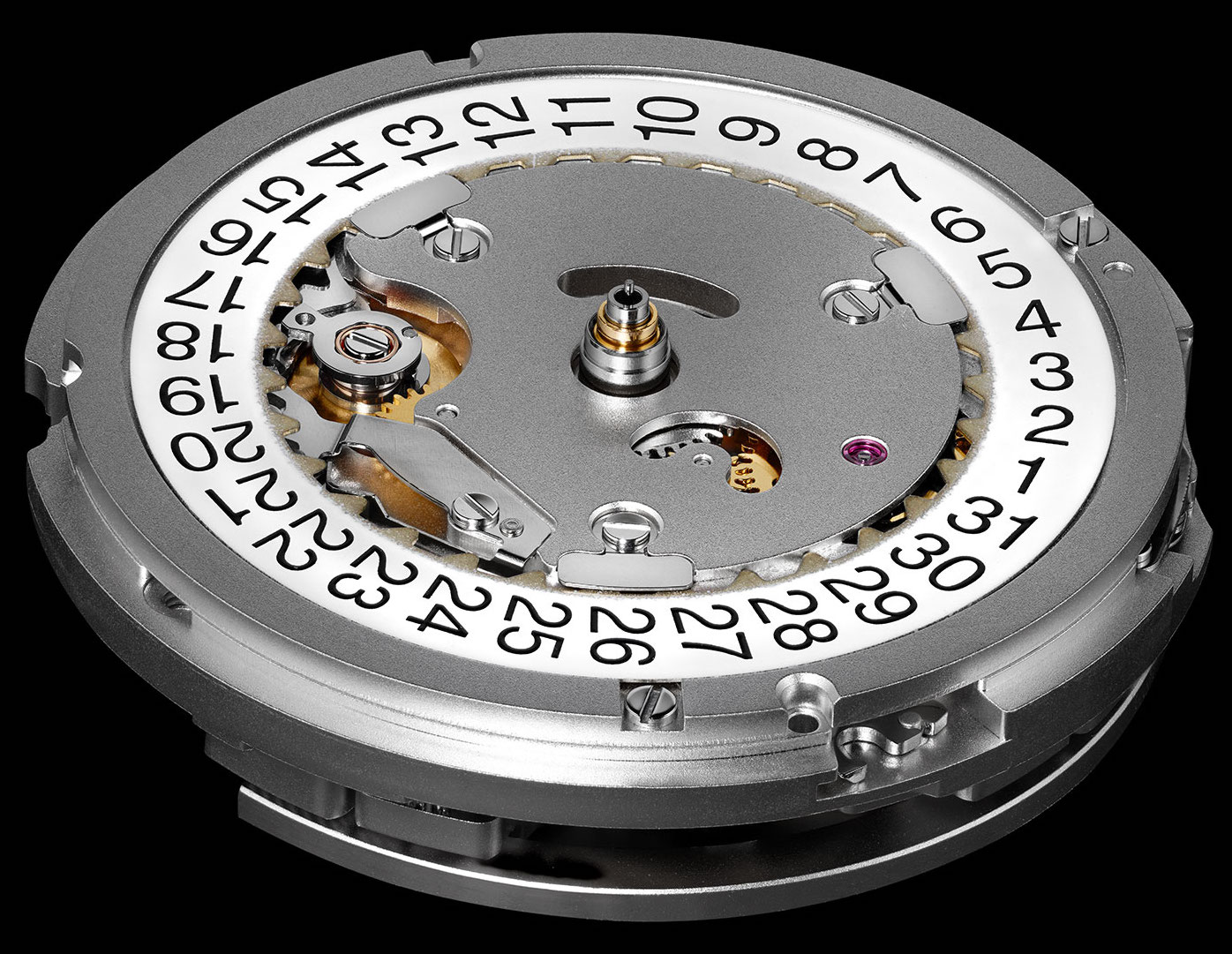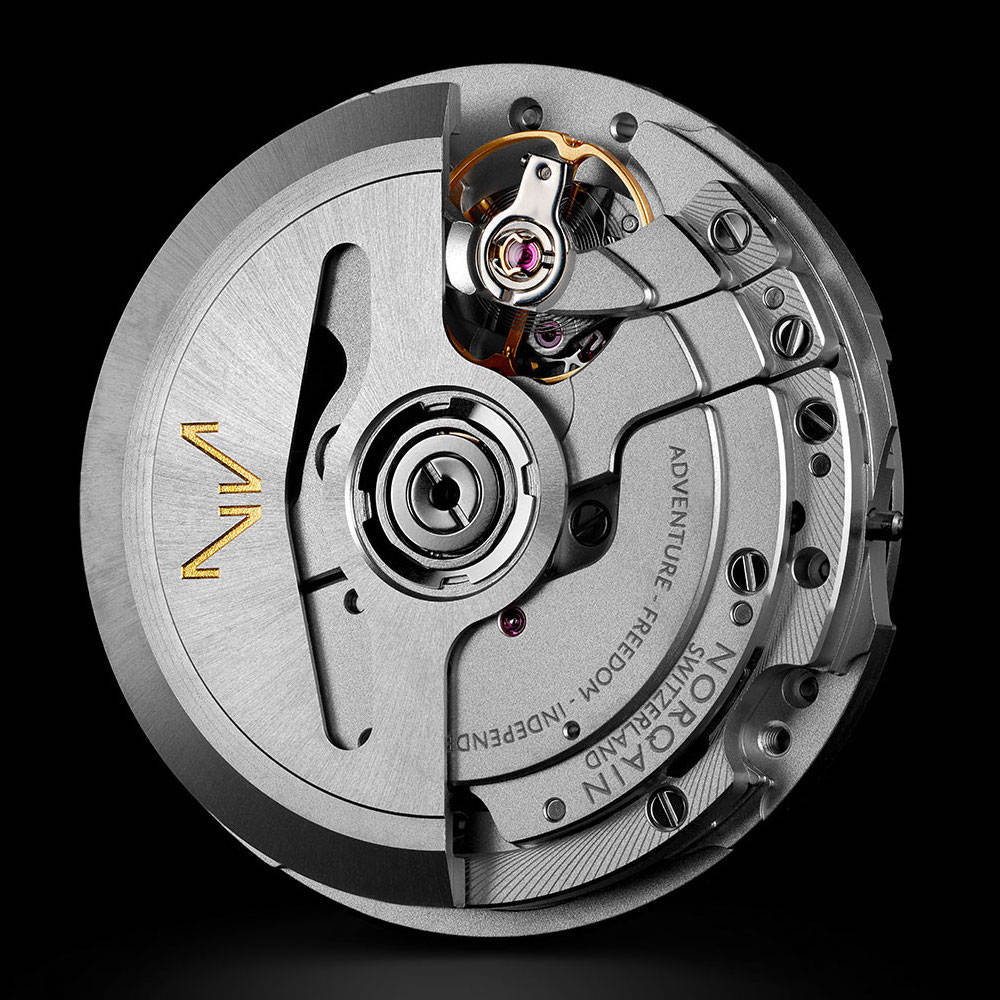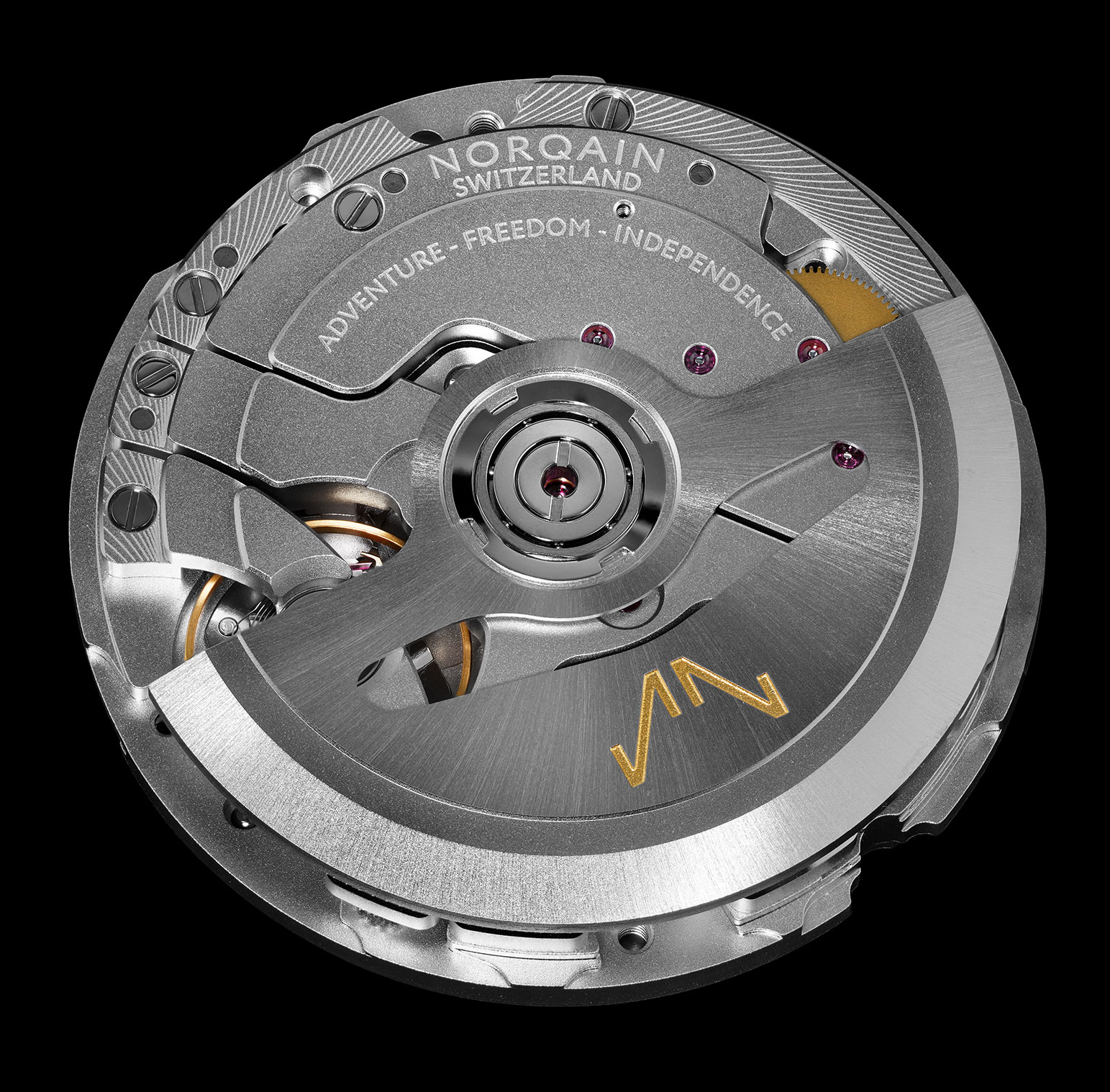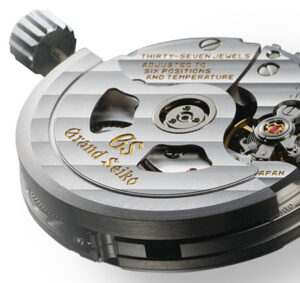Cal. ASE 120 is a micro-rotor automatic movement with GMT produced by Schwarz Etienne. Like Cal. ASE 100, this movement features a tungsten carbide micro rotor at 3:00 and triple cocks for the wheel train between 6:00 and the balance. Despite the added adjustable central 24 hour hand, Cal. ASE 120 has less components (213 rather than 230) and jewels (34 rather than 38) than the basic movement.
The free-sprung balance is manufactured in-house by Schwarz Etienne and features four screws to adjust the inertia and rate. The modern version uses a Phillips flat spiral terminal coil hairspring manufactured by E20, though it originally used a Breguet spiral from Straumann Precision Engineering. The large barrel houses a mainspring capable of delivering 86 hours of running time.
Originally known as Cal. BSE-GMT, this movement is the same thickness (5.35 mm) as the basic Cal. ASE-120 but 0.30 mm thicker than the original Cal. BSE1325-A.
Schwarz Etienne ASE Family Overview
The ASE family is a series of micro-rotor automatic movements produced by Schwarz Etienne since 2009. The first “manufacture” movements created under Marc Barrachina and Raphaël Radicchi, the family originated with the Cal. BSE1325-A, or “base 13.25 ligne series A”. The family was renamed “ASE” for “Schwarz Etienne Series A” when other movements were added around 2013.
The movement is somewhat larger than the popular automatic movements from ETA at 13.25 ligne (30.40 mm) but is appropriately sized for modern watches. It has many advanced features, notably a tungsten micro rotor for automatic winding, 80 hour power reserve from a single large barrel, and a free-sprung variable-inertia balance. Nearly all components are manufactured in-house apart from the hairspring, which is sourced from Straumann (Breguet curve) or E20 (Phillips flat spiral). Despite the oversized mainspring and slow 21,600 A/h operation, the movement can reach COSC Chronometer accuracy.
The movement has many novel innovations that have made it an ideal choice for third-party luxury watchmakers like Ming. The wheel train is mounted low on the main plate, making room for the thick micro rotor, tall balance and escapement, and large barrel. This also leaves room for complications, and the ebauche is designed with pass-through holes for a chronograph, adjustable central 24-hour hand, big date, or other complication modules. It features small seconds at 6:00 and a standard date wheel is offered.
The original Cal. BSE1325-A measured 5.05 mm thick, but this was retired when the new Cal. ASE 100 and Cal. ASE 120 were introduced. Both of these, and the similar Cal. ASE 200, measure 5.35 mm thick. This new generation of ASE movements shares much of their design with the double-barrel MSE family.
